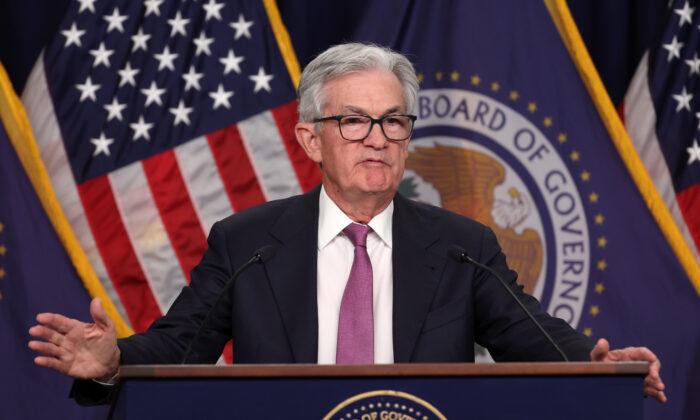The Federal Reserve raised interest rates by 25 basis points, matching market expectations and lifting the benchmark federal funds rate to a target range of 4.50 to 4.75 percent.
This was the smallest rate increase since the current quantitative tightening cycle began in March 2022.
Central bank officials believe that further increases will be necessary to obtain “a stance of monetary policy that is sufficiently restrictive,” according to a statement from the Federal Open Market Committee (FOMC). While inflation has slowed, it remains too high for the U.S. economy.
“Recent indicators point to modest growth in spending and production. Job gains have been robust in recent months, and the unemployment rate has remained low. Inflation has eased somewhat but remains elevated,” the FOMC stated.
“Russia’s war against Ukraine is causing tremendous human and economic hardship and is contributing to elevated global uncertainty. The Committee is highly attentive to inflation risks.”
However, when determining the size and pace of future rate hikes, policymakers will consider policy lags, economic and financial developments, and cumulative tightening in their decision-making.
The rate-setting committee will continue trimming its holdings of Treasury securities, agency debt, and agency mortgage-backed securities.
“The Committee is strongly committed to returning inflation to its 2 percent objective,” the statement reads.
The market had widely anticipated that the FOMC would overwhelmingly agree to a quarter-point rate increase amid cooling inflation and a slowing U.S. economy.
Financial markets on Feb. 1 finished higher after a volatile session. The U.S. Dollar Index, which measures the greenback against a basket of currencies, tumbled by 0.25 percent to below 102. The U.S. Treasury market was mixed, with the benchmark 10-year yield down by nearly 5 basis points to about 3.42 percent.
What’s Next for the Federal Reserve?
Following the FOMC announcement, U.S. rate futures are penciling in an 85 percent chance of a quarter-point hike at next month’s policy meeting. There’s also a 15 percent chance of a rate pause.While economists and market analysts have purported that it might be time to hit the pause button to determine how 15-year-high interest rates are impacting the broader economy, Federal Reserve officials are debating how much higher the federal funds rate should go, especially as the institution nears the end of its quantitative-tightening cycle.
Since November 2022, investors have been fighting the Fed, insisting that the central bank will reverse course and begin cutting rates later this year in response to slowing economic conditions. However, Fed Chair Jerome Powell has repeatedly stated that the Summary of Economic Projections (SEP) is a better indicator of where the benchmark rate could go in 2023.
According to the SEP, policymakers expected the median rate to be 5.1 percent this year.
Many rate-setting FOMC members have contended that it’s too soon to say that inflation is over.
“People’s expectations about inflation are beginning to move down. So I’m comfortable beginning that stepped-down process ... I’d be happy to do 25s [basis points] if I were there,” she said. “We still have upside risk to inflation. I don’t think I’ve reached a point where I think it is clearly falling. There are enough issues out there to say we have to guard against them.”
A Look at the Data
In December 2022, the annual inflation rate eased to 6.5 percent, and the core Consumer Price Index (CPI), which excludes the volatile energy and food sectors, eased to 5.7 percent.The Personal Consumption Expenditures (PCE) price index—the Fed’s preferred inflation gauge—also slowed to 5 percent year-over-year in December 2022. The core PCE price index fell to 4.4 percent.





